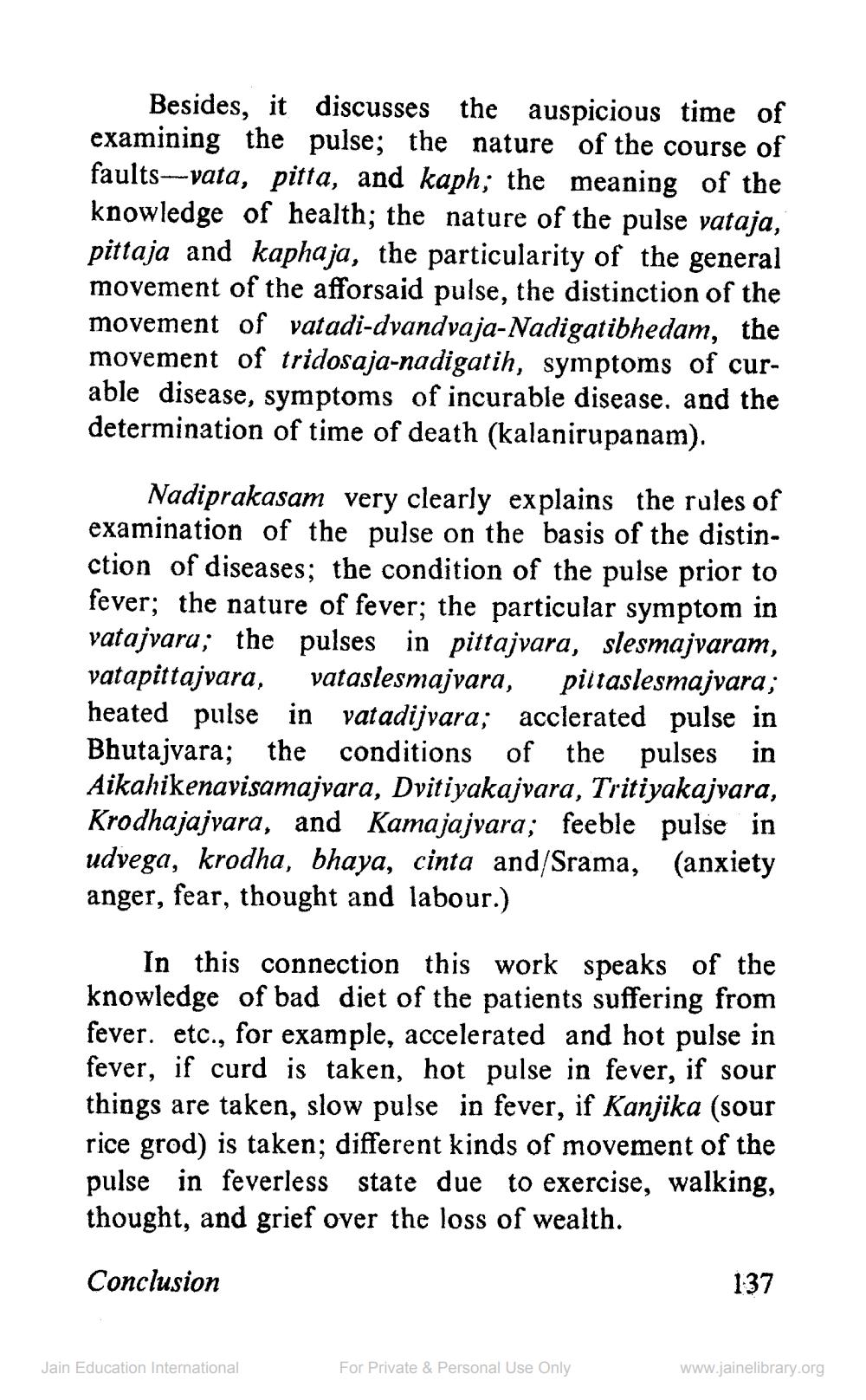________________
Besides, it discusses the auspicious time of examining the pulse; the nature of the course of faults--vata, pitta, and kaph; the meaning of the knowledge of health; the nature of the pulse vataja, pittaja and kaphaja, the particularity of the general movement of the afforsaid pulse, the distinction of the movement of vatadi-dvandvaja-Nadigatibhedam, the movement of tridosaja-nadigatih, symptoms of curable disease, symptoms of incurable disease, and the determination of time of death (kalanirupanam).
Nadiprakasam very clearly explains the rules of examination of the pulse on the basis of the distinction of diseases; the condition of the pulse prior to fever; the nature of fever; the particular symptom in vatajvara; the pulses in pittajvara, slesmajvaram, vatapittajvara, vataslesmajvara, piitaslesmajvara; heated pulse in vatadijvara; acclerated pulse in Bhutajvara; the conditions of the pulses in Aikahikenavisamajvara, Dvitiyakajvara, Tritiyakajvara, Krodhajajvara, and Kamajajvara; feeble pulse in udvega, krodha, bhaya, cinta and/Srama, (anxiety anger, fear, thought and labour.)
In this connection this work speaks of the knowledge of bad diet of the patients suffering from fever. etc., for example, accelerated and hot pulse in fever, if curd is taken, hot pulse in fever, if sour things are taken, slow pulse in fever, if Kanjika (sour rice grod) is taken; different kinds of movement of the pulse in feverless state due to exercise, walking, thought, and grief over the loss of wealth.
Conclusion
137
Jain Education International
For Private & Personal Use Only
www.jainelibrary.org




